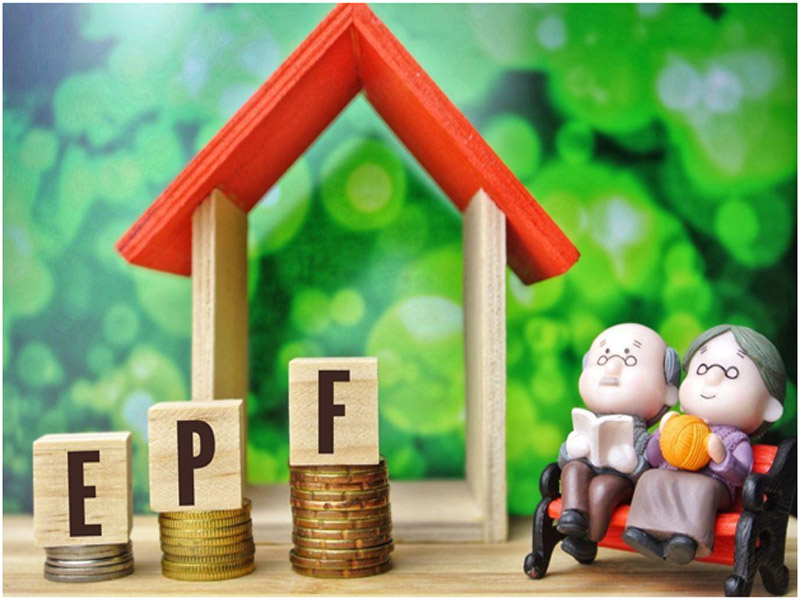The Employee Provident Fund (EPF) is one of the most popular retirement schemes in India. This scheme is a type of savings account where employees and employers make contributions towards the employee’s retirement fund. The Employee Provident Fund Organisation (EPFO) administers the scheme on behalf of the government of India.
Employees registered under the scheme can withdraw their accumulated corpus after they retire or when they leave their job. However, there are specific conditions that one must fulfill to withdraw the funds, and there are tax implications associated with it.
In this article, we will discuss how and when you can withdraw your EPF money, how it is taxed, and how you can avoid taxes through EPF Form 5 and EPF Form 10C.
When Can You Withdraw Your EPF Money?
As per EPFO guidelines, employees can withdraw their EPF balance under the following circumstances:
1. Retirement: EPF is primarily a retirement scheme. On attaining the age of 58 years, employees become eligible to withdraw their full corpus, including the employer’s and employee’s contribution and interest.
2. Resignation: If an employee resigns from service before attaining 58 years of age, he/she can withdraw the accumulated corpus within 2 months from the date of resignation. However, the employee must have been unemployed for two months to withdraw the funds. Moreover, the employer’s contribution to the pension scheme can only be withdrawn after 10 years of service.
3. Termination: If an employer terminates the employee’s service, he/she can withdraw the accumulated corpus if the employee remains unemployed for two months after termination.
4. Medical Treatment: One can withdraw up to 6 times of their salary for medical treatment if they or their family members have an illness. However, the employee must have completed five years of service.
5. Education/Marriage: One can withdraw up to 50% of their EPF corpus for the marriage or education of themselves, children, or siblings. However, the employee must have completed seven years of service.
6. Home Loan: One can withdraw up to 90% of their EPF corpus to purchase or construct a home or 24 months of basic pay with allowances (subject to a maximum of the employee's contribution plus interest) if they are repaying a home loan.
How Is EPF Taxed?
EPF contributions are eligible for tax deductions under Section 80C of the Income Tax Act up to Rs. 1.5 lakh per annum. Therefore, up to Rs. 1.5 lakh of the contribution made towards the EPF account is tax-free.
In case an employee withdraws the EPF balance before completing five years of continuous service, the withdrawal is taxable in the financial year in which the withdrawal is made. The employee’s contribution and interest earned on it is not included in the calculation of taxable income.
However, in the case of employer’s contribution, the tax on the contributions are applicable in the following ways:
1. If the employer’s contribution is not included in the employee’s taxable salary, it is taxable as “profits in lieu of salary”.
2. If the employer’s contribution is included in the employee’s taxable salary, it is taxable as a part of the employee’s taxable income.
How to Avoid Taxes on EPF Withdrawal
One can avoid paying taxes on the EPF withdrawal balance by transferring it to a new employer. In such a case, the EPF account will remain active, and the accumulated corpus will continue to earn interest. To avail of this facility, the employee must mandatorily fill EPF Form 11 or the new declaration form 11 in case of transfer of the old account.
Alternatively, an employee can choose to use EPF Form 5 and EPF Form 10C to withdraw the balance without attracting tax liabilities.
EPF Form 5
EPF Form 5 is a composite form for employees to claim benefits like PF final settlement, advance, or UAN- name correction. If an employee fulfills the following criteria, he/she can withdraw the accumulated EPF balance by filling up EPF Form 5:
1. The employee should have completed at least 58 years of age.
2. The employee should have completed ten years of continuous service.
3. The employee should have retired from service.
Using this form, the employee can get the full balance of their EPF account without any tax liability.
EPF Form 10C
If an employee fulfills the following criteria, he/she can withdraw the EPS component of the EPF account by filling up EPF Form 10C:
1. The employee should have completed ten years of continuous service.
2. The employee should have submitted the claim within two years of leaving the job.
Overall, the EPF is a beneficial scheme for employees to plan their retirement funds. It allows tax relief on contributions and encourages salaried employees to save for their future. However, one must weigh all the pros and cons of withdrawing their EPF funds before making a decision.
Summary
The Employee Provident Fund (EPF) is a retirement scheme administered by the Employee Provident Fund Organization (EPFO). The EPF scheme provides investors with the opportunity to save money for their post-retirement life. If you are a registered member with the EPF scheme and have completed ten years of continuous service, you can withdraw your accumulated corpus upon retirement or resignation. If an employee wants to avoid the tax on withdrawal, they can transfer the accumulated corpus to a new employer or opt for forms like EPF Form 5 or EPF Form 10C. However, one must carefully weigh all tax implications and pro and cons before making a decision.
Disclaimer:
The reader should note that the above article is only for informational purposes and should not be treated as investment advice. Before taking any decisions related to investments in the Indian financial market, the reader must conduct independent research and consult a financial advisor. The writer and the publication are not responsible for any financial losses incurred due to the reader's investment decisions.


























